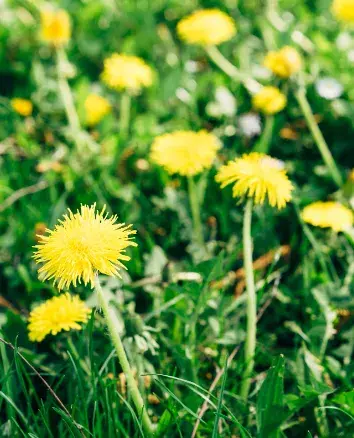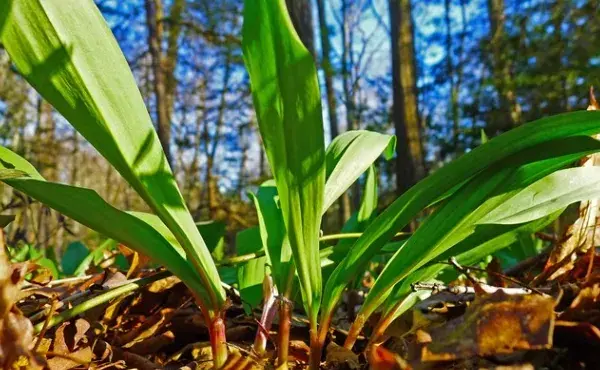Wellness Weeds Workshop: Spring Herbs Part 1
- Kim Moynihan

- May 14
- 6 min read
As we transition from winter to spring, nourishing our bodies with the right nutrients becomes critical for optimal health. Unlike animals, humans do not hibernate, but we do undergo decisive metabolic adjustments during colder months. This period is often characterized by a slight decrease in body temperature, longer sleep duration, reduced physical activity, and a leaning towards the consumption of comfort foods due to the colder climate.
This lifestyle leads to an increase in toxins accumulated in the body due to reduced circulation and less sweating, coupled with decreased intake of fresh fruits and vegetables. As such, incorporating essential vitamins and minerals, such as Vitamins A, C, and E, Zinc and Selenium into our diets during spring helps neutralize these toxins and supports detoxification processes.
In this month's Wellness Weeds Workshop, we focused on the medicinal plants that are the first to appear come spring. We learned about their identification, their rich nutrient content, and their medicinal benefits, with a particular focus on supporting detoxification and replenishing essential nutrients during spring. We covered A LOT of plants so I'm breaking it into two separate blog posts.
Stinging Nettle (Urtica dioca)

Nettle is a noteworthy plant renowned for its potent detoxifying properties. This modest shrub is significantly enriched with vitamins A, C and K, along with minerals like iron and calcium. Nettle tea, made from this plant, has a long-standing reputation of enhancing vitality and purifying the blood. It's a healthful addition to your everyday routine, covering an array of benefits from boosting energy to supporting skin health.
Identifying Stinging Nettle is straightforward. The characteristic heart-shaped leaves with deep serrations and pointed tips can help in its identification. It's a tall plant that grows anywhere between 3 to 7 feet in height. The stems are square and covered with stinging hairs that may cause skin irritation if not handled with care. Upon closer inspection, you'll be able to spot small, greenish or white flowers grouped together in clusters.
Nettle isn't just a plant; it's nature's remedy for a variety of ailments, particularly during spring. It's a powerful antihistamine, providing relief from common seasonal afflictions such as hay fever. It supports the body's detoxification processes, aiding toxin elimination for a healthier you. Additionally, it has impressive anti-inflammatory properties that promote joint health. Rich in iron, this plant also helps to combat fatigue, providing an essential energy boost when needed.
Dandelion

Dandelion (Taraxacum officinale) is more than just a common weed. It's a potent herb, bursting with an array of vitamins such as A, C, and K, and filled with crucial minerals including iron, potassium, and zinc. With properties that boost liver function and digestion, the humble dandelion is an unexpected source of rejuvenation. Its leaves and roots are of particular benefit. The bright yellow flowers of the dandelion may be easily spotted, but it's the intricate pattern of serrated leaves that sets it apart. The plant prospers in diverse environments, ranging from meadows to the cracks in the sidewalks.
Taking a closer look, the dandelion is marked by a hollow stem that oozes milky sap when broken, while each stem supports a single flower which eventually transforms into a fluffy white seed head. As Spring unfurls, dandelion comes into its own, elevating health and wellness in a variety of ways. Its bitter compounds function as natural digestive aids, stimulating digestion and alleviating bloating and other digestive concerns. As we transition out of Winter, dandelion aids in liver detoxification by flushing out toxins, infusing the body with a sense of renewal.
Furthermore, its diuretic properties help your body shed excess water, assisting in seasonal adjustments. Packed with vitamin-rich leaves and roots, dandelion also bolsters the immune system, making its incorporation into your Spring routine beneficial. Especially during the transition from winter to spring, the use of dandelion supports overall health, promoting natural detoxification and rejuvenation in this season of renewal.
Chickweed (Stellaria media)

Unlock the power of nature with Stellaria media, more commonly known as Chickweed. This beautiful, humble herb is a powerhouse of nutrients such as vitamins C, A, B, along with minerals like calcium, magnesium, and potassium. Its medicinally rich properties, often used for soothing various skin conditions and reducing inflammation, are just some of the reasons why Chickweed is such a beneficial addition to your health regimen. Moreover, the cooling effect of this herb not only aids in digestion but it may also play a significant role in weight management.
Identifying Chickweed isn't difficult. You'll notice its small, oval leaves exhibiting a succulent texture and growing in opposite pairs. The stems are slender and green, bearing a single line of hair on one side. Its flowers are noteworthy: small, white, and star-like, each with five lobed petals. As for the taste and scent, Chickweed presents a mild, earthy taste coupled with a subtle grassy aroma when crushed. You can find this beneficial herb thriving in cool, moist areas, from shaded spots to your garden, fields, and even paths.
But the rewards of Chickweed don't stop with its nutritional profile and soothing properties. It also provides meaningful support for respiratory health, clearing congestion, and has strong anti-inflammatory properties beneficial for joint pain and swelling. Coupled with its diuretic effect, Chickweed can assist in detoxification and maintain fluid balance, especially beneficial during the spring season.
Wild Violet (Viola odorata)

Experience the bounty of nature with the Wild Violet (Viola odorata), a true gem adorned with distinctive purple flowers. This colourful addition to your garden not only catches the eye with its beauty but also serves as a potent nutritional powerhouse. Rich in vitamins A and C, calcium, and iron, it's a blessing for your general health. Beyond its nutritional value, Wild Violet has remarkable medicinal properties. It's well-known for its anti-inflammatory and antiseptic attributes, making it an incredible ally in treating sore throats, coughs, and various respiratory conditions.
The external use of this herb works wonders for skin conditions such as eczema and acne by soothing and promoting skin health. Its supportive role in the lymphatic system fosters detoxification, enhancing your overall health. Wild Violet has been cherished for generations as a herb that revitalises both body and spirit, especially during the renewal of spring. Recognizing the Wild Violet (Viola odorata) is quite simple. The plant showcases heart-shaped, slightly serrated leaves on slender stalks with deep purple or blue-violet flowers. Occasionally you may also come across white or yellow variants. These five-petaled flowers, each with a lower petal spur, are most comfortable in shady spots with moist, rich soil. They can be discovered blooming in woodlands, hedgerows, gardens, and parks across the country.
Ramps

Welcome to nature's bounty with ramps, also known as wild leeks! As they sprout in early spring, ramps are a symbol of renewal. Not only are they native to North American forests, but they are also a powerhouse of culinary delights and medicinal virtues. Packed with vitamins A and C, ramps provide antioxidant properties that fortify your immune system. Their high sulfur compound levels, akin to garlic and onions, are excellent for cardiovascular health.
Identifying ramps is quite simple. Look for their smooth and light green broad leaves, spanning 10-25 cm in length. If you crush them, a strong garlic-onion scent emerges, confirming their identity. Ramps are also known for their creamy-white flowers that grow on a single stalk after their leaves wilt. Typically, they prosper in the moist, well-drained soil of Eastern North American forests. Including ramps in your spring diet not only grants you seasonal flavors but also the medicinal benefits of immunity boost, eye health support, skin regeneration, and cardiovascular health. Their detoxifying powers protect your body from harmful free radicals, leaving you feeling healthy and refreshed.
At the end of each spring day, as we strive for balance and rejuvenation, the gifts of nature offer us boundless opportunities for health and healing. The simple act of turning to these medicinal plants can imbue our lives with nature's nurturance and the profound wisdom contained within each leaf and petal.
I hope this exploration of springtime herbs inspires you to integrate their healing properties into your daily routine. To help you get started, we invite you to download our Free Spring Herb Recipe Guide. This comprehensive guide features over 25 delicious and healthful recipes, each designed to harness the rejuvenating power of springtime herbs. Whether you're looking to refresh your diet, enhance your wellness routine, or simply delight in the flavors of the season, this guide offers something for everyone.
Download the Free Spring Herb Recipe Guide now and begin your journey toward a more vibrant, healthful spring.
With love and herbs,
Kim
P.S. For the additional herbs we discussed, including Creeping Charlie, Henbit, and Purple Dead Nettle, be sure and read Part 2 of this Blog Post!




Comments